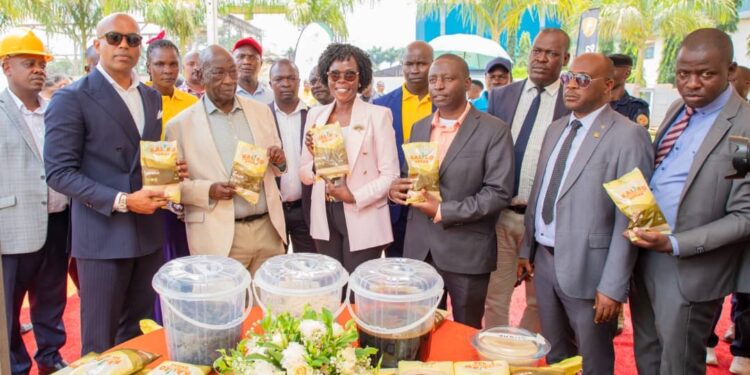The modern Kaliro Sugar Factory has officially been launched, marking a significant milestone in Uganda’s agro-industrialization journey. Spearheaded by Ashish Monpara, the factory boasts an initial capacity to crush 25,000 tons of sugarcane per day, with an annual output of 78,000 tons of raw sugar.
According to Monpara, the factory plans to expand its operations over the next two years, increasing its crushing capacity to 8,000 tons per day and raw sugar output to 230,000 tons annually. This ambitious project has already created 1,500 direct jobs, with a target to generate 10,000 jobs in the near future.
Monpara emphasized the factory’s commitment to sustainable growth, stating, “Kaliro Sugar Factory will implement eco-friendly waste management practices, promote renewable energy solutions, and support reforestation programs to safeguard the environment while powering Uganda’s agro-industrial future.”
President Yoweri Kaguta Museveni, represented by Minister of Trade and Cooperatives Fred Mwebesa, noted that the factory embodies Uganda’s economic transformation spirit, adding value to agricultural produce, creating jobs, and reducing imports.
Minister of State for Investment and Privatization Evelyn Anite highlighted the project’s alignment with Uganda’s development agenda, saying, “Uganda’s future lies in agro-industrialization. Investments like Kaliro Sugar Factory directly align with the National Development Plan III and Vision 2040 by creating jobs, empowering farmers, and stimulating regional economies.”
Mumolu Nathan, Chairman of the Outgrowers’ Association, expressed the positive impact on farmers, stating, “For the farmers of Kaliro and beyond, this factory is a dream turned into reality. It guarantees us fair markets, consistent incomes, and the dignity of seeing our sugarcane transformed into national wealth.”
Monpara added, “Kaliro Sugar Factory promises young men and women of Busoga dignified jobs and skills. We are committed not only to producing sugar but also to producing opportunity, dignity, and shared growth.”










